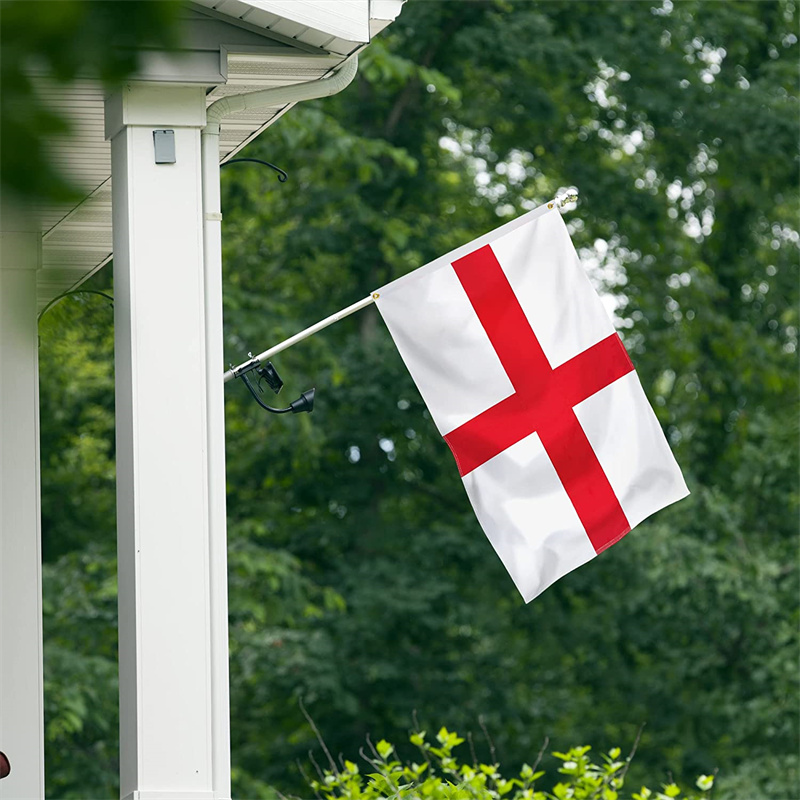Enter your email in the box below to get the most mind-blowing animal stories and videos delivered directly to your inbox every day.
It’s hard to believe that the flag of the United States has been through so many changes since it was first created. It wasn’t until the early 20th century that the American flag we know today began to take shape! Over the years, each new version of the flag represented an important moment in American history. From incorporating new states into the Union to reflecting the nation’s journey towards freedom and equality, every change to “Old Glory” tells a story. Let’s look at the American flag’s different versions as it changed throughout history! All Flags Of The World

First, let’s look at the flags used during the American Revolution as the United States began to form. The American Revolution did not begin as a push for independence from Britain. Rather, it was a call to gain seats in the British Parliament. Over the course of several decades, however, it grew into a full-blown revolution and ultimately led to America’s independence. Each different version of the American flag reflects this hard-fought journey toward independence.
In the 1700s, American colonies had had enough of oppressive British rule. To express their discontent, many colonists joined forces and rallied around various flags — often portraying some version of a snake — as symbols of their rebellion against colonial rule. The iconic “Don’t Tread on Me” flag signified the American colonies’ unyielding resistance to British rule.
Even centuries later, this flag remains a powerful reminder of America’s fight for independence and liberty. The original “Don’t Tread on Me” flag featured a yellow background with a coiled rattlesnake, poised and ready to strike. The snake was accompanied by the words, “Don’t Tread on Me.” American colonists resonated with the rattlesnake — a deadly creature that only attacks when provoked.
Another flag used by American colonists in the 1700s was the “Sons of Liberty” banner. This flag was flown by the original members of the Boston “Tea Party.” These colonists famously dumped tea into Boston Harbor to protest unfair taxation from Britain. The flag had alternating white and red stripes and may have been the inspiration for the American flag used today.
On a crisp winter day in January 1776, George Washington declared his resolve to the Continental Army. He ordered the hoisting of what is often considered the “first” American flag at Prospect Hill in Charleston, just outside his encampment near Boston. This bold gesture was to commemorate this milestone’s importance and signal a unified stand against British rule.
This flag goes by many names, such as the Union Flag, the Grand Union flag, or the Continental Colors. It featured the same pattern alternating red and white stripes as the Sons of Liberty banner. However, there were 13 stripes to signify the original 13 colonies. It also bore the “Kings Colors” (also known as the “Union Jack”). This symbol served as a clear reminder of British rule since the colonists had not declared independence yet, but were still united in their fight for freedom.
Washington’s Headquarters Flag, also known as the Commander-in-Chief Flag, was carried by General George Washington during the Revolutionary War that served as a sign of his leadership. This flag featured a blue field with alternating rows of 13 white six-pointed stars. This pattern would become the foundation of the current American flag, representing another step towards freedom and independence. Today, you can find a replica of this iconic flag displayed in front of Washington’s Headquarters at Valley Forge.
On July 4, 1776, the American colonists declared their independence from Great Britain. However, it wasn’t until nearly a year later that an official flag would be adopted to represent the newly formed United States of America.
You’ve probably heard this tale from American folklore — the one about the young Betsy Ross, who was commissioned by George Washington to heroically hand-stitch the first American flag. Unfortunately, this popular story is largely a product of imagination. In truth, there are no records of who designed or created America’s first flag.
What we do know is that the Second Continental Congress passed the Flag Act of 1777 on June 14, 1777, declaring the official design of the American flag:
“Resolved, That the flag of the thirteen United States be thirteen stripes, alternate red and white; that the union be thirteen stars, white in a blue field, representing a new constellation.”
The design represented the union of the thirteen colonies, with thirteen stripes (alternating red and white) and thirteen stars. However, Congress didn’t state how many stars should be included on the flag, how they should be arranged, or how many points each star should have. This freedom allowed for some creative design choices, and there is a great deal of variation in these early American flags.
For example, many early American flags were made with stars arranged in a perfect circle. This symbolized that all the colonies were of equal importance. On the other hand, the iconic “Great Luminary Pattern” featured individual stars arranged together to create a single large star. The unique arrangement of each star had them pointing or “sparkling” in different directions. This reflected the people’s independence and added life and energy to the flag.
In 1794, a second Flag Act was signed. This changed the official design of the American flag to include stars and stripes for each new state that joined the Union. The newly admitted states — Vermont (1791) and Kentucky (1792) — meant that this new flag now had 15 stars and 15 stripes. So, the infamous “Star Spangled Banner” — the American flag that inspired Francis Scott Key to write America’s national anthem in 1814 — had 15 stars and 15 stripes!
Then in 1818, the U.S. Congress decided to bring back an old design of the American flag. This design still included adding a star for each new state, but it returned to just 13 stripes to symbolize the original 13 colonies. So, as each new state joined the Union, a new star was added to the flag, but the 13 stripes remained the same.
However, once again, the shape and arrangement of the stars were not clarified. This meant that the stars could be arranged in any way and have any number of points. For the next 100 years, there were some interesting variations of America’s iconic flag! But in 1912, President Taft officially set the rule for arranging stars on the U.S. flag. Since then, each new flag has used the same established pattern. The last state to join the Union was Hawaii in 1960, and the current U.S. flag has not changed.
It is quite common to call the American flag “Old Glory.” But where did this famous nickname come from? Well, it started with a sea captain from Massachusetts named William Driver. When Driver was only 21 years old, he was appointed as a sea commander! To celebrate, his mother made him a large American flag for his new ship, the Charles Doggett.
For Driver, however, that American flag was much more than a mere piece of fabric, and he fondly named it “Old Glory.” The flag was a piece of America he could carry wherever he traveled. He felt connected to his home by proudly flying the symbol of his homeland.
When the patriotic sea captain retired, he continued to fly his beloved “Old Glory” flag from his new home in Nashville. The flag was so large that he had to attach it to a rope from the attic window, pull it across the street, and fasten it on a locust tree!
But when Tennessee succeeded from the Union in 1861, “Old Glory” became a problem, both with his community and even within his own family when two of his sons enlisted in the Confederate army. But even when a local group of armed guerrillas descended on Driver’s house, he merely stepped out to meet them with a stern warning: “If you want my flag,” he declared fervently, “you’ll have to take it from my cold, dead hands.”
After that, Driver hid “Old Glory,” sewing the flag inside a quilt to keep it safe. After the war, Driver revealed the flag, and “Old Glory” was hoisted up the statehouse flagstaff. The term “Old Glory” became a popular motto and name in honor of Driver’s devotion to his country.
©GreenMeansGo, CC BY-SA 4.0 , via Wikimedia Commons – License
Today the American flag holds a special significance to the American people, providing them a sense of unity and identity. At the same time, personal interpretations of its meaning make it an invaluable source of self-expression. For centuries, the American flag has embodied the values of freedom, liberty, unity, and hope for U.S. citizens. It has served as an emblem of the rights declared in the Constitution and Bill of Rights and a representation of the individual liberty outlined in the Declaration of Independence. Today, waving or displaying this iconic banner symbolizes patriotism, nationalism, and a strong sense of pride and unity among Americans.
The government and the people of America use their flag as an important symbol and have many customs surrounding it. For example, the flag should be proudly displayed from sunrise to sunset on buildings and flagstaffs. However, it can be flown at night if it is illuminated. The flag must be raised and lowered by hand without being furled. It should be hoisted briskly and lowered ceremoniously.
Salutes are given when the flag passes in a parade, during the Pledge of Allegiance or National Anthem, or when raising or lowering it. The flag should never touch the ground or brush against objects. When a flag is no longer in suitable condition to display, it should be disposed of, preferably by burning it.
Thank you for reading! Have some feedback for us? Contact the AZ Animals editorial team.
Comfort Retrievers can carry an egg in their mouths without breaking the shell because they have very soft mouths.
As an Amazon Associate I earn from qualifying purchases.

Flag Of Cuba Learn more about us & read our affiliate disclosure.